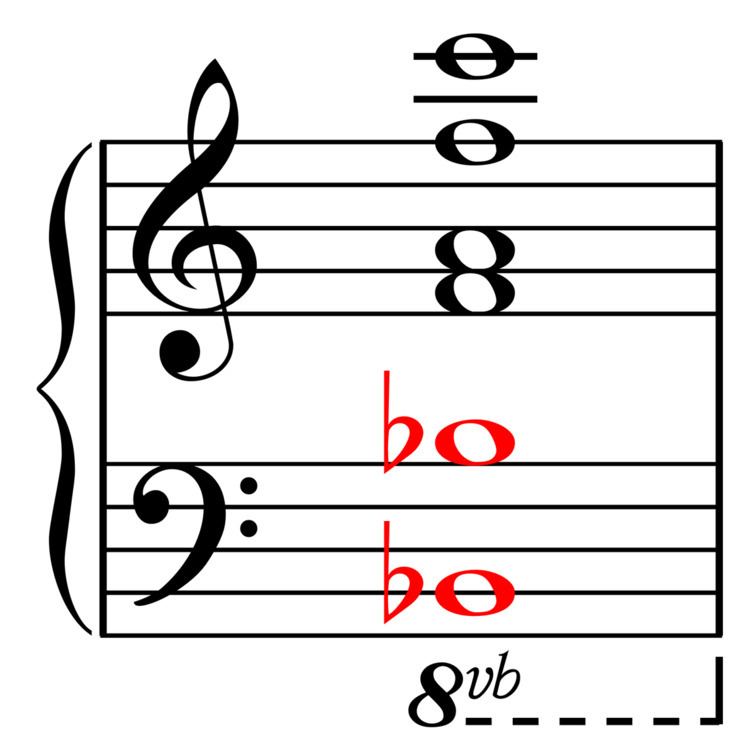 | ||
Pandiatonicism is a musical technique of using the diatonic (as opposed to the chromatic) scale without the limitations of functional tonality. Music using this technique is pandiatonic. The term "pandiatonicism" was coined by Nicolas Slonimsky in the second edition of Music since 1900 to describe chord formations of any number up to all seven degrees of the diatonic scale, "used freely in democratic equality" (Kostelanetz 2013, 465). Triads with added notes such as the sixth, seventh, or second (added tone chords) are the most common (Anon. 2001; Kennedy 2006), while the, "most elementary form," is a nonharmonic bass (Andriessen & Schönberger 2006, 57). According to Slonimsky's definition,
Pan-diatonicism sanctions the simultaneous use of any or all seven tones of the diatonic scale, with the bass determining the harmony. The chord-building remains tertian, with the seventh, ninth, or thirteenth chords being treated as consonances functionally equivalent to the fundamental triad. (The eleventh chord is shunned in tonic harmony because of its quartal connotations.) Pan-diatonicism, as consolidation of tonality, is the favorite technique of NEO-CLASSICISM [sic]. (Slonimsky 1938, xxii)
Pandiatonic music typically uses the diatonic notes freely in dissonant combinations without conventional resolutions and/or without standard chord progressions, but always with a strong sense of tonality due to the absence of chromatics. "Pandiatonicism possesses both tonal and modal aspects, with a distinct preference for major keys" (Kostelanetz 2013, 465). Characteristic examples include the opening of Sergei Prokofiev's Piano Concerto No. 3, Alfredo Casella's Valse diatonique, and Igor Stravinsky's Pulcinella (Latham 1992). "The functional importance of the primary triads...remains undiminished in pandiatonic harmony" (Kostelanetz 2013, 465). An opposed point of view holds that pandiatonicism does not project a clear and stable tonic (Simms 1986, 63–64). Pandiatonicism is also referred to as "white-note music" (Machlis 1979, 163), though in fact occasional accidentals may be present. Other composers who employed the technique are Maurice Ravel, Paul Hindemith, Darius Milhaud, Aaron Copland, and Roy Harris (Slonimsky 1947, iv). Pandiatonicism is also employed in jazz (e.g., added sixth ninth chord) and in Henry Cowell's tone clusters.(Kostelanetz 2013, 517).
Slonimsky later came to regard pandiatonicism as a diatonic counterpart of Arnold Schoenberg's twelve-tone technique, whereby melodies may be made up of seven different notes of the diatonic scale, and then be inverted, retrograded, or both. According to this system, "strict pandiatonic counterpoint" may use progressions of seven different notes in each voice, with no vertical duplication (Slonimsky 1947, iv).
The term has been criticized as one of many by which, "Stravinsky's music, everywhere and at once, is made to represent or encompass every conceivable technique" (van den Toorn 1975, 105), and that has, "become so vague a concept that it has very little meaning or use" (Woodward 2009, 1). Pandiatonic music is usually defined by what it is not, "by the absence of traditional elements" (Woodward 2009, iii): chromatic, atonal, twelve-tone, functional, clear tonic, and/or traditional dissonance resolutions (Woodward 2009, 3). "It has been applied...to diatonic music lacking harmonic consistency [or]...centricity" (Tymoczko 2011, 188n31). Slonimsky himself, while making fun of the definition, quotes a professor saying pandiatonicism is, "C-major that sounds like hell" (Woodward 2009, 2).
Examples of pandiatonicism include the harmonies Aaron Copland used in his populist work, Appalachian Spring (Jaffe 1992, 30–31), and the minimalist music by Steve Reich, Philip Glass, and the later works of John Adams (Dahlhaus, et al. 2001; Jaffe 1992, 28). William Mann describes The Beatles "This Boy" as, "harmonically...one of their most intriguing, with its chains of pandiatonic clusters" (Mann 1963 cited in Everett 2001, 204).
Pandiatonic music
The following musical works include pandiatonicism.
